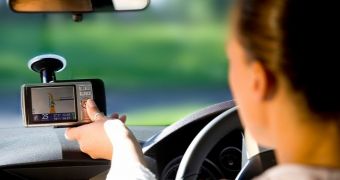Microsoft Research is very close to completing development of another groundbreaking technology that would help people around the world get around shopping malls, large halls or parking spaces a lot easier than ever before.
The company's division responsible for creating new and innovative ideas designed a GPS system that works indoors, eliminating the need for satellite signal that's absolutely mandatory for any traditional GPS device.
The new project was based on a combination of GPS and Wi-Fi-based solutions, which helped the device determine the location of any subject with an accuracy of 10 meters. Cloud connectivity is at the core of everything, the researchers explained, while the devices will feature a steerable, high-gain, directional antenna to the front of a GPS receiver.
“Currently, the main approach for providing indoor location services is to profile an indoor space to get a set of Wi-Fi maps and use them to infer user location based on the device-provided Wi-Fi signatures. Profiling is a time-consuming and expensive process, because there is no ground truth to ‘nail down’ the Wi-Fi maps. Profiling is also a continuous process, because the number and the locations of the Wi-Fi access points change over time,” Jie Liu, principal researcher and a research manager at Microsoft Research, said.
Researchers have already tested the device in a total of 31 indoor locations and it proved effective in 20 of them, with a median error of fewer than 10 meters, which Microsoft says is perfectly normal for absolutely all GPS receivers.
While it might sound a little bit weird at first, such a technology could have quite a lot of purposes if integrated into other devices, such as smartphones and smart watches. Microsoft is already working hard to step into the wearables market, so developing such a system would clearly offer it a fair advantage in front of the competition.
“The best use case of the technology in the short term is probably profiling machines for indoor environments. Not all indoor places can receive GPS signals, but if we have enough ground truth and combine them with inertial navigations using accelerometers and gyroscopes, we can make the indoor-profiling process much cheaper and quicker,” Liu added.
At this point, the GPS system working indoors in still in the development stage, so it might take a few years to say the least until it gets the green light for production, not only as a stand-alone device, but also as an integrated module of other gadgets.

 14 DAY TRIAL //
14 DAY TRIAL //